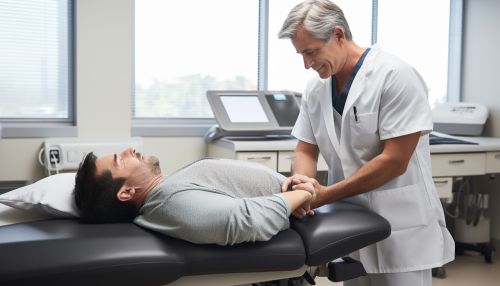Spinal tap
Introduction
A Spinal tap, also known as a lumbar puncture, is a medical procedure where a needle is inserted into the lower part of the spinal column. This procedure is performed to collect cerebrospinal fluid (CSF) for diagnostic testing or sometimes to relieve pressure in the brain. The spinal tap is a critical tool in the diagnosis of various neurological conditions, including meningitis, multiple sclerosis, and brain tumors.
Procedure
The spinal tap procedure is typically performed in a hospital or clinic setting. The patient is usually positioned on their side or sitting up with their back arched. This position allows the healthcare provider to access the lower part of the spinal column, where the CSF is located.


The skin over the lumbar area is cleaned with an antiseptic solution to minimize the risk of infection. A local anesthetic is then injected to numb the area. The healthcare provider then inserts a thin, hollow needle between two lumbar vertebrae and into the spinal canal. Once the needle is in place, the provider can collect a sample of CSF or measure the pressure within the spinal canal.
Indications
A spinal tap is indicated for a variety of conditions and situations. These include diagnosing infections of the central nervous system, such as meningitis or encephalitis, diagnosing neurological disorders such as multiple sclerosis or Guillain-Barré syndrome, and diagnosing cancers of the brain or spinal cord. A spinal tap can also be used to administer medications directly into the spinal canal, such as chemotherapy drugs or antibiotics.
Risks and Complications
As with any medical procedure, there are potential risks and complications associated with a spinal tap. These can include infection, bleeding, headache, and nerve damage. In rare cases, a spinal tap can lead to serious complications such as brain herniation, where increased pressure in the skull forces part of the brain to move out of its normal position.
Aftercare
Following a spinal tap, patients are typically observed for a period of time to monitor for any immediate complications. They may be advised to rest and drink plenty of fluids to help alleviate any potential headaches. Patients are also instructed to monitor for any signs of infection, such as fever or increased pain at the puncture site, and to seek medical attention if these occur.
